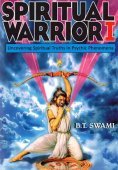Catching, Catch, Catched: 2 definitions
Introduction:
Catching means something in Hinduism, Sanskrit, the history of ancient India. If you want to know the exact meaning, history, etymology or English translation of this term then check out the descriptions on this page. Add your comment or reference to a book if you want to contribute to this summary article.
In Hinduism
Yoga (school of philosophy)
Source: ORA: Amanaska (king of all yogas): A Critical Edition and Annotated Translation by Jason BirchCatching (animals) is denoted by the Sanskrit term Dharṣa, according to verse 3-52 of the Śivasaṃhitā.—Accordingly, “Through the power of practice, the Yogin obtains Bhūcarī Siddhi, whereby he can move like the animals which are hard to catch (durdharṣa-jantu) when hands are clapped”.

Yoga is originally considered a branch of Hindu philosophy (astika), but both ancient and modern Yoga combine the physical, mental and spiritual. Yoga teaches various physical techniques also known as āsanas (postures), used for various purposes (eg., meditation, contemplation, relaxation).
India history and geography
Source: Singhi Jain Series: Ratnaprabha-suri’s Kuvalayamala-katha (history)1) Catching (a haul of fish) represents a scene of human life commonly depicted on the Saṃsāracakra paintings, in ancient India, as mentioned in the Kathās (narrative poems) such as Uddyotanasūri in his 8th-century Kuvalayamālā (a Prakrit Campū, similar to Kāvya poetry).—Page 185.21 f.: Here follows a description of a printed scroll illustrating the Jaina conception of saṃsāracakra. [...] The saṃsāra-cakra illustrated the three worlds of hell, human world and the world of gods. [For example:] A man entering the sea to save some drowning relation; a man stealing others' money; a fisherman catching a haul of fish with his net
2) Catching (an insect) represents a scene of animal life, according to the Kuvalayamālā according to the same saṃsāra-cakra.—[For example:] A number of animals making a composite form, one upon another: spider caught in the web of another spider, the latter catching an insect pursued by a lizard [...].

The history of India traces the identification of countries, villages, towns and other regions of India, as well as mythology, zoology, royal dynasties, rulers, tribes, local festivities and traditions and regional languages. Ancient India enjoyed religious freedom and encourages the path of Dharma, a concept common to Buddhism, Hinduism, and Jainism.
See also (Relevant definitions)
Query error!
Full-text (+1055): Grahin, Avapata, Ghatin, Palava, Shabdagraha, Vagura, Kautika, Kupini, Matsyaghata, Mrigajalika, Rishyada, Taittirika, Panjarakheta, Vagurika, Mrigabandhini, Vaguravritti, Grahana, Pakadani, Patili, Tadaga.
Relevant text
Search found 328 books and stories containing Catching, Catch, Catched; (plurals include: Catchings, Catches, Catcheds). You can also click to the full overview containing English textual excerpts. Below are direct links for the most relevant articles:
Harshacharita (socio-cultural Study) (by Mrs. Nandita Sarmah)
18. Description of Machines and Tools < [Chapter 6 - Other Socio-Cultural Aspects]
Manasollasa (study of Arts and Sciences) (by Mahadev Narayanrao Joshi)
14. Dog sports described in the Manasollasa < [Chapter 3 - Social and Political conditions reflected in Somesvara’s Manasollasa]
15. Falcon fighting described in the Manasollasa < [Chapter 3 - Social and Political conditions reflected in Somesvara’s Manasollasa]
16. Matsya-vinoda (the sport of catching fish) < [Chapter 3 - Social and Political conditions reflected in Somesvara’s Manasollasa]
Manusmriti with the Commentary of Medhatithi (by Ganganatha Jha)
Verse 8.283 < [Section XLII - Assaults]
Verse 8.283 < [Section XLII - Assaults]
Verse 5.128 < [Section XIII - Purification of Substances]
Village Folk-tales of Ceylon (Sri Lanka), vol. 1-3 (by Henry Parker)
Story 170 - Concerning The Golden Peacock < [Part III - Stories of the Cultivating Caste]
Story 93 - The Female Fowl Thief < [Part III - Stories of the Cultivating Caste]
Story 245 - Concerning a Prince and a Kinnara Woman < [Part III (b) - Stories of the Western Province and Southern India]
Matangalila and Hastyayurveda (study) (by Chandrima Das)
Concluding Remarks < [Chapter 5]
Āpātabandha: The fourth technique < [Chapter 3]
Anugatabandha: The third technique < [Chapter 3]
Folklore of the Santal Parganas
Chapter XCVIII - Catching a Thief < [Part I]
Chapter 5 - The Jackal and the Tigers < [Appendix]
Chapter CLXVI - After Death < [Part V]
Related products

